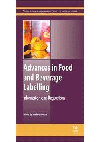You’ve come a long way, probiotic research! Particularly in recent years, research regarding the human health benefits of probiotics has made headway.
“Scientific evidence is building to the point where public policy makers should review the evidence on the importance of live microbes to health,” said Mary Ellen Sanders, PhD, probiotic microbiology consultant and executive science officer for the International Scientific Association for Probiotics and Prebiotics (ISAPP).
In fall 2013, experts met to develop a consensus opinion on proper use of the term “probiotic” based on the scientific developments since 2001. The experts concluded that the term “probiotic” can be used to describe a product that contains a minimum level of a probiotic from a few well-studied species that have been shown to support a healthy digestive tract (for example, Lactobacillus and Bifidobacterium species) — without requiring demonstration of benefit at the strain level. This is consistent with the previous recognition that species of yogurt starter bacteria Lactobacillus bulgaricus and Streptococcus thermophilus are considered probiotics because they help alleviate lactose maldigestion symptoms.
Many benefits of probiotics
In spring 2013, scientific experts convened to review the state of the science and discuss how to inform public policy regarding the health benefits of prebiotics and probiotics. As a result, a review of research and a framework for promoting recommendations based on sound, scientific evidence was published in the Annals of the New York Academy of Sciences. The research review concludes that probiotics may help reduce the side effects of antibiotics, help prevent common upper respiratory infections and help prevent necrotizing enterocolitis — all important public health interventions.
Sanders said she believes that the current science justifies recommendations for the use of probiotics in some clinical settings; and that evidence is mounting that supports some benefits for the general population.
To encourage the inclusion of dietary recommendations for prebiotics and probiotics in the 2015 Dietary Guidelines for Americans, ISAPP filed comments with the Dietary Guidelines Advisory Committee (DGAC) in fall 2013. In ISAPP’s comments addressing probiotics, they asked the DGAC to evaluate the question: “What is the impact of foods containing live and active cultures and probiotics on long term health maintenance and reduction of disease risk?” (Comments can be viewed at http://www.health.gov/dietaryguidelines/dga2015/comments/; search for probiotics.)
“The key is the value of looking at foods as a part of a healthy diet and bringing to bear the healthy characteristics of fermented foods and probiotics,” said Sanders. “We [ISAPP] asked the DGAC to review the evidence: Both intervention studies and large observational studies that look at dietary factors, dietary patterns, and health outcomes in populations that consume fermented foods and probiotics versus those that don’t.”
Sanders added that, in light of the general nature of the Dietary Guidelines, any recommendations regarding probiotics would most likely be broad such as, “Include fermented dairy foods as a part of a healthful eating plan.”
Of course, additional research on probiotics’ health benefits will assist in the advancement of nutrition policy and recommendations. “Standards for conducting quality human trials exist, and probiotic research should adhere to these standards,” said Sanders.
Healthcare savings thanks to dairy
Sanders highlighted the need for research investigating the social and economic impact of probiotic use. An economic analysis of dairy intake and a variety of chronic diseases (Am J Hypertens, 2004) indicated that an increase in dairy consumption to three to four servings per day would result in healthcare savings of more than $200 billion over five years. Perhaps a similar analysis could be performed for the consumption of probiotic-containing dairy and healthcare savings.
A framework for promoting probiotic recommendations
1. Refine the definition of “probiotic”
2. Promote quality research on probiotics and prebiotics
3. Support standards for quality research
4. Accept information gleaned from well-conducted observational studies
5. Evaluate the potential positive social and economic impacts of probiotic use
6. Expand policy guidelines to include foods that contain helpful or potentially helpful live microorganisms
7. Improve regulatory attitudes toward probiotics
Source: Annals of the New York Academy of Sciences (Sanders ME, et al. Feb 2014)









